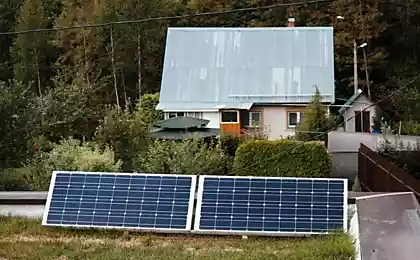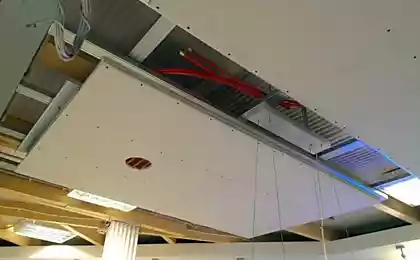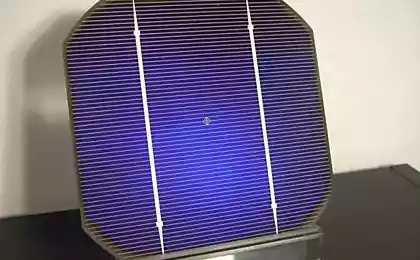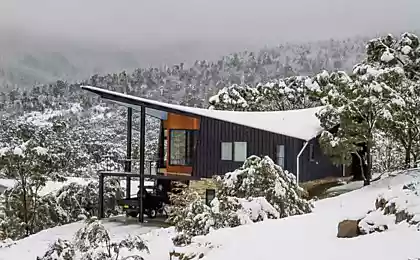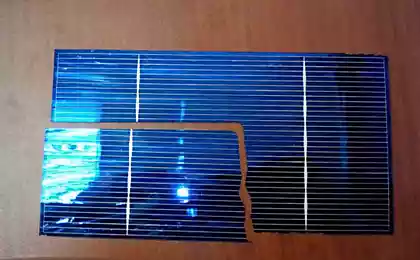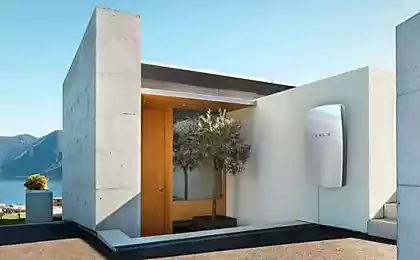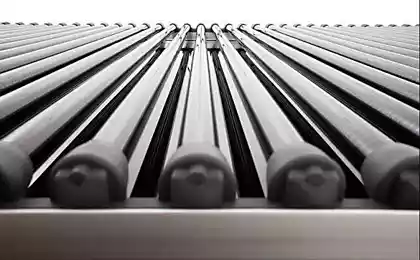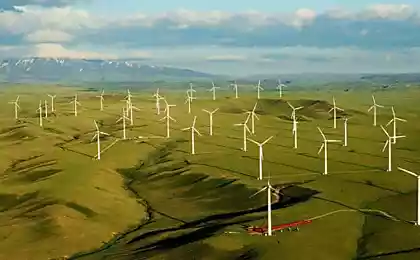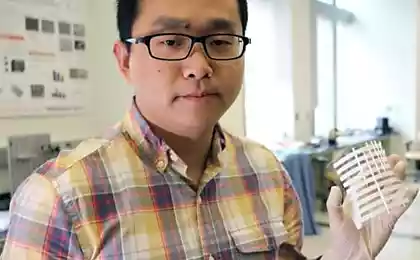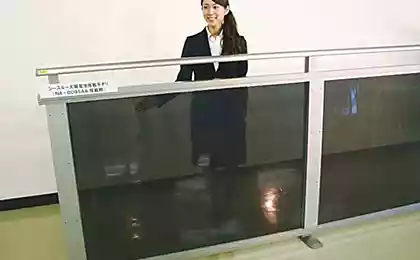689
Passive house — a futuristic comfort
Savings on electricity and heating — a very big plus in today's environment of rising energy in the domestic market.
Passive house is a term used to describe the most effective design with extremely low energy consumption.
Specific unit of energy for this passive house is about 10% per unit volume. In developed countries, standards established, and a low consumption of energy for heating modern homes is ≤15 kWh per square meter per period in a calendar year.

The total consumption of primary energy must not exceed ≤120 kWh / m2 per year. Achieving this level of consumption indicates the high efficiency of energy saving technologies in your home.
Technologies used in passive house
Five basic elements of a passive house depends on its effectiveness:
1. insulation;
2. the absence of "heat bridges";
3. efficient Windows with energy-saving technology and certification for use in a passive house (triple glazing, the use of argon sputtering to reflect the heat, GENEO PHZ technology);
4. the tightness of the structure;
5. the mechanical ventilation system with highly efficient heat recovery.
With the right approach to implement the above principles, and correct use of the basic elements listed above, you can easily and without problems reach the desired level of energy consumption.
We will divide our theme, for facilities on energy resources and technologies for greater clarity and visibility.
Electricity
The use of alternative supply of electric energy or full autonomy from municipal electricity — the main feature of the house. This is facilitated by a number of modern technologies aimed at saving electricity consumption and on the partial or full autonomy from external energy sources.
Obviously, in any house or apartment, you can reduce the electricity consumption due to the optimization of this consumption.
Main measures:
Replacement of old household appliances and lamps of the lighting devices belonging to classes of energy efficiency with reduced power consumption. This is A, A++ or A+++ energy efficiency class; management of the home appliances in eco auto mode. For example, use the timer setting for refrigerator or washing machine to work at night. This will significantly reduce your costs. Radical solution to the problem with invoices for electricity — the use of alternative energy sources such as solar panels and wind turbines.
Solar panels
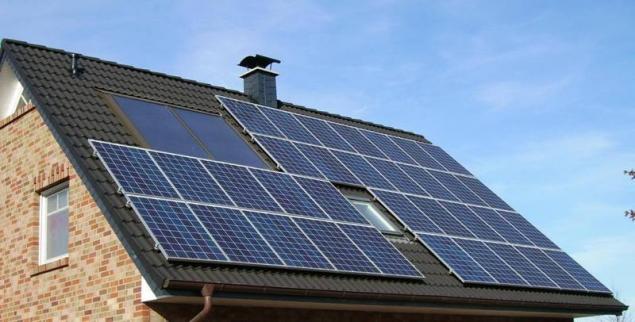
They are on the market presented in three main varieties:
Monocrystalline modules has multiple photovoltaic converters (PVC). The main material of such a module is a semiconductor pure silicon. This module easily identified by the characteristic dark blue or black color working cells, and relatively high market value. Polycrystalline panels made from cheaper polycrystalline silicon. In the manufacture by melting of such crystals formed grain boundary, which reduces the efficiency of the panel. Thin film panels are perhaps the most budget option for a private home. Are not only pleasant for the buyer and high enough efficiency. Work even in diffuse solar radiation. The obvious disadvantage is the necessity of installing high-voltage inverters and controllers, which is not always possible to use with household electrical systems low-power. The principle of operation of any solar module or panel is to generate electricity. This process is carried out under sunlight in semiconductor materials. Each of the solar cells consists of two layers with different conductivity, on the border of which is formed a transition zone of positive charges.
Advantages:
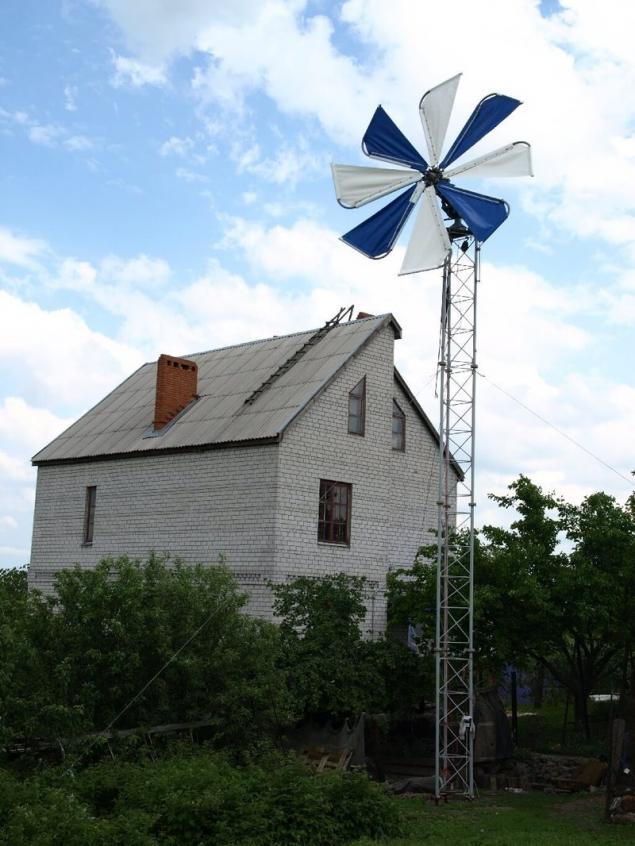
Another alternative way to generate electricity for domestic (and not only!) needs. On the market there are often two types of such devices:
Dignity wing models in a more complete use of wind energy due to its design.
The mechanism of the wind turbine is quite simple:
Insulation
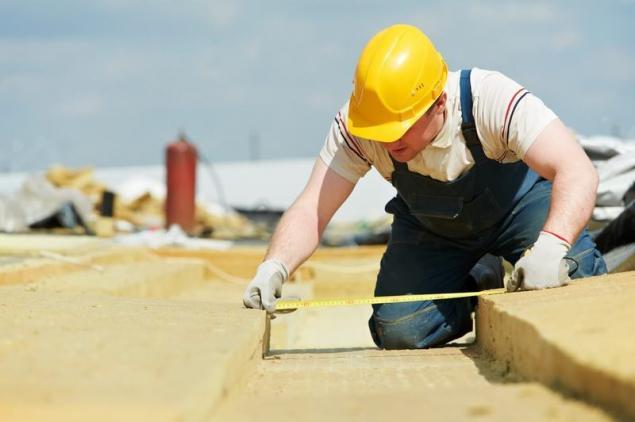
Insulation of a passive house is, without exaggeration, of vital importance. After all, how much alternative energy would be the owners, its efficient use is largely determined by the heat loss of residential structure (or lack thereof).
The most effective solutions in this area is:
1. Reduction in heat loss through walls or the elimination of "thermal bridges" (the use of insulating materials with low conductivity: mineral wool, polystyrene, polyurethane and others).
2. An innovative method is to install the vacuum panels (VIP) or translucent insulating shells of small thickness (solar heat penetrates into the structure, not Bouncing off the film surface).
3. Correct docking of the roof and walls with insulating materials. Insulation of ceilings by insulating against heat loss the attic space.Plastic Windows
A crucial role is played by installation of modern energy efficient Windows. Turnkey solutions proven offers Rehau. This famous brand of plastic Windows and other structures on the world markets for over 60 years, offers many solutions for the implementation of the technology of a passive house in full.
For use in a passive house we recommend you to use the profile Rehau GENEO PHZ, which is well-proven. This profile has been successfully certified for use in passive houses.
Profile Rehau GENEO PHZ is the perfect solution, due to the absence of conductors cold inside profile design by removing the metal reinforcement, six air chambers, the three contours of seals and the possibility of installing special glass wide (53 mm), which will have a positive impact not only on energy efficiency but also to the silence inside the house.
Heating

Home heating related to passive buildings must be literate and more effective use of resources than conventional homes. Ideally, modern residential building do not require the cost of the heating system and operates on the principle of "passive heating" — heat comes from running appliances, and people, and maintained by the ventilation system with energy recovery and proper insulation.
Unfortunately, in regions with a continental climate to fully abandon the traditional heating in the moment will fail.
In such cases, owners should apply economical and effective heating system.
Pyrolysis coppers of long burning
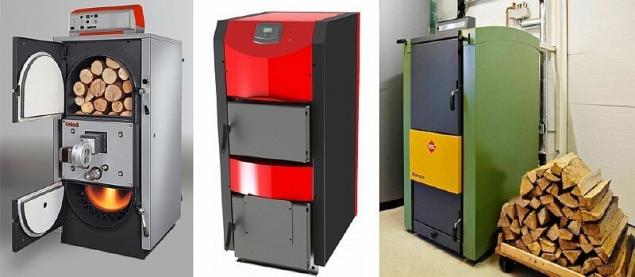
The most recent boilers of a pyrolysis type using pellets as fuel with automatic control unit and a screw-dosing. Automation provides the necessary autonomy and in place with use of system of automation of heating is able to deliver fuel from the hopper and to provide timely regulation of the combustion rate.
Burning one bookmark fuel in these devices can last up to 24 hours due to the slow decay, provide automatic regulation of the flow of air, and further combustion of the evolved gases. Model no automatics do not need electricity, as the air is supplied to them through the natural draft.
Advantages:
Heat pumps

Complete replacement or significant support for the heating system depending on a number of factors.
Depending on the heat source, which heat pump, there are the following models:
Heat is supplied via the external circuit, heating the refrigerant. He then in a gaseous state enters the compressor, where the compression of the refrigerant and increasing its temperature. Then the heat is removed through the condenser and is transferred to the coolant of the internal circuit. The refrigerant then cools down, gets into the evaporator and the whole process is repeated again.
Advantages:
Solar collectors
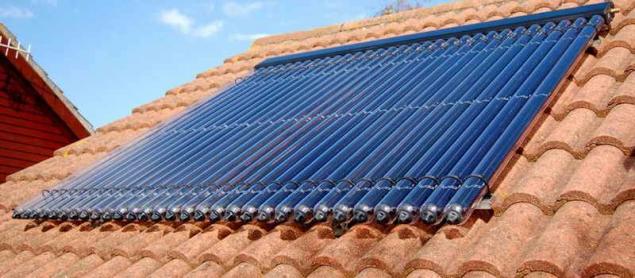
Solar collectors provide residential home hot water for domestic use and with their help it is possible to effectively maintain the heat in the heating system (the most efficient in the offseason). Solar heat accumulated by the absorber (a special element of the device) and transferred to the heat carrier, usually water.
There are the following types of such devices:
Flat, having the form of a plate or panel. The plate absorbs heat and transfers it to the coolant that circulates through the collector.
Vacuum or tubular model composed of a plurality of tubes insulated by the vacuum (it is located between the outer and inner tube). The coolant moves through the inner tubes. The effectiveness of such models on average 2.5 times higher than that of the plate devices.
Advantages:
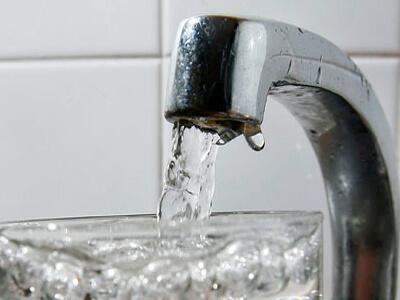
Water passive houses differs primarily by the fact that the constant availability of hot water is provided by alternative sources of heat that enters, for example, via heat pumps.
As you know, in an ordinary suburban house electrical energy consumed, in particular, and to ensure the family hot water used in the household and economic needs. Spent up to 30 kilowatts per cubic meter of water, which have to be paid from the family budget. House, stores energy, does not have this drawback — and this is one of its main advantages.
Additionally, the design of the house introduced an artesian well, the well of the Abyssinian or the system of collecting rainwater which significantly reduces your dependence on external sources of supply.
Lighting
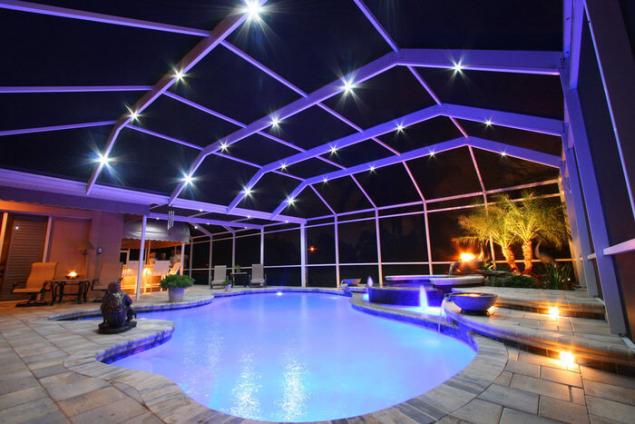
The lighting system is mounted with the requirements for the economical consumption. Used a number of technical and architectural solutions such as:
The arrangement of the light wells of the present system of lighting the house with sunlight. The simplest example of such a well is a hole in the ceiling, allowing to transfer natural light into the room with minimal loss. Light enters the room during the daylight hours, which reduces electricity consumption. Such wells are particularly effective in bathrooms and toilets (the owners do not have to include lamps).
Installation of led lights or filament lamps, which allows significantly reduce the consumption of electricity. Such a device can save up to 85% of the electrical energy consumed by traditional bulbs, and up to 50% of consumption of fluorescent lighting devices economical type.
To choose the correct LED light manufacturer and price, please contact our material.
In addition to the tangible economy lamp diodes have other significant advantages:
they are virtually no heat (the energy spent on producing light, not heat);
have a luminous flux with qualitative characteristics (100 lumen for every watt consumed);
their exceptionally long lifespan (average 50,000 hours).
Installation of induction lighting, which is a new type of fluorescent lamps.
The illumination of the phosphor coating in such devices is carried out by electromagnetic induction (electrodes for ignition in the appliances are not).
Advantages:
Ventilation
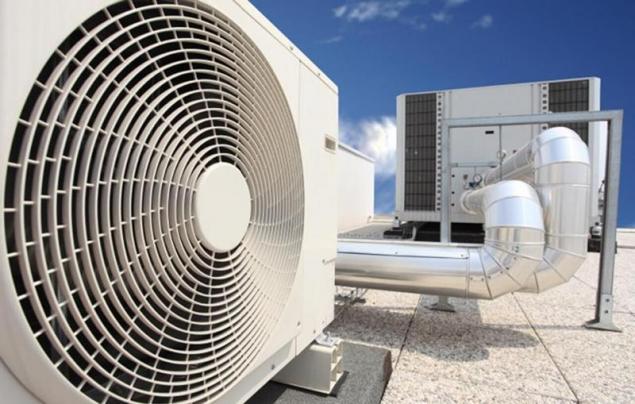
Ventilation system of passive houses allow you to maintain the indoor climate and the natural level of oxygen and carbon dioxide and humidity of the room air. But their main advantage is the ability to save thermal energy.
Such systems are equipped with recuperators (heat exchangers), able to take away the heat from the vented air and return it to the house.
The principle of this mechanical device is simple but effective:
1. exhaust air masses from the kitchens, bathrooms and toilets pass through the heat exchanger, giving the heat the upper and lower plate of the device.
2. At the same time on adjacent channels, the heat exchanger unit into the house and let the fresh outdoor air, which absorbs heat and moves it to the dwelling. The ventilation system is arranged in such a way, is able to 87% reduction in temperature loss in the house!
From the owners there is no need to open Windows for ventilation, which eliminates the uncontrolled loss of heat. And at the same time achieved the main goal — the premises remains healthy microclimate. The air is always fresh and warmed up to a comfortable temperature.
And the efficiency of the system is an average of 75-95%, which is achieved not only by installing heat exchangers, but also the installation of an efficient electric fans (they consume less energy, thus saving heat in the system).
The architectural features of a passive house

A passive house is designed so that architectural decisions have helped to save and conserve energy resources. A quality home is able to accumulate and retain heat in winter and cool in the summer heat without the use of special high-energy devices. To do this, the architects of the following techniques:
Conclusions.
Passive house — a house with extremely low consumption and energy consumption – not more than 30%. Such a structure perfectly isolated (excluded all bridges), and the thickness of the insulation of its wall is thirty inches. A ventilation mechanical type and the additional heat sources (e.g., collectors). Provided independent energy supply (heat pumps, heliopoli, wind generators).
This project has several obvious advantages:
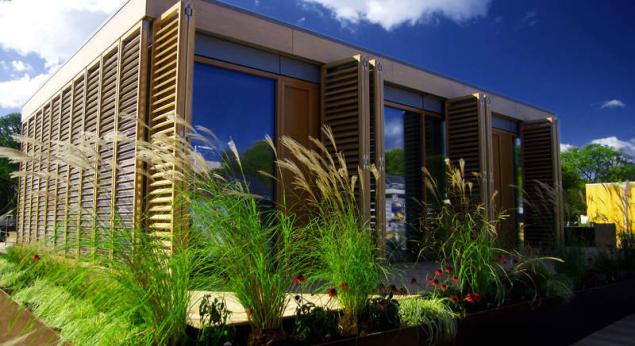
Obviously, such construction technology has a great future. Already today, economical type of building will become a mandatory standard, as is the case with 2015 in the European Union.
Source: energylogia.com/home/avtonomnost/passivnyj-dom.html
Passive house is a term used to describe the most effective design with extremely low energy consumption.
Specific unit of energy for this passive house is about 10% per unit volume. In developed countries, standards established, and a low consumption of energy for heating modern homes is ≤15 kWh per square meter per period in a calendar year.

The total consumption of primary energy must not exceed ≤120 kWh / m2 per year. Achieving this level of consumption indicates the high efficiency of energy saving technologies in your home.
Technologies used in passive house
Five basic elements of a passive house depends on its effectiveness:
1. insulation;
2. the absence of "heat bridges";
3. efficient Windows with energy-saving technology and certification for use in a passive house (triple glazing, the use of argon sputtering to reflect the heat, GENEO PHZ technology);
4. the tightness of the structure;
5. the mechanical ventilation system with highly efficient heat recovery.
With the right approach to implement the above principles, and correct use of the basic elements listed above, you can easily and without problems reach the desired level of energy consumption.
We will divide our theme, for facilities on energy resources and technologies for greater clarity and visibility.
Electricity
The use of alternative supply of electric energy or full autonomy from municipal electricity — the main feature of the house. This is facilitated by a number of modern technologies aimed at saving electricity consumption and on the partial or full autonomy from external energy sources.
Obviously, in any house or apartment, you can reduce the electricity consumption due to the optimization of this consumption.
Main measures:
Replacement of old household appliances and lamps of the lighting devices belonging to classes of energy efficiency with reduced power consumption. This is A, A++ or A+++ energy efficiency class; management of the home appliances in eco auto mode. For example, use the timer setting for refrigerator or washing machine to work at night. This will significantly reduce your costs. Radical solution to the problem with invoices for electricity — the use of alternative energy sources such as solar panels and wind turbines.
Solar panels

They are on the market presented in three main varieties:
Monocrystalline modules has multiple photovoltaic converters (PVC). The main material of such a module is a semiconductor pure silicon. This module easily identified by the characteristic dark blue or black color working cells, and relatively high market value. Polycrystalline panels made from cheaper polycrystalline silicon. In the manufacture by melting of such crystals formed grain boundary, which reduces the efficiency of the panel. Thin film panels are perhaps the most budget option for a private home. Are not only pleasant for the buyer and high enough efficiency. Work even in diffuse solar radiation. The obvious disadvantage is the necessity of installing high-voltage inverters and controllers, which is not always possible to use with household electrical systems low-power. The principle of operation of any solar module or panel is to generate electricity. This process is carried out under sunlight in semiconductor materials. Each of the solar cells consists of two layers with different conductivity, on the border of which is formed a transition zone of positive charges.
Advantages:
- the average efficiency of the device up to 24% (polycrystalline models it is lower to 12%);
- ensuring the autonomy of the life support systems;
- environmental safety;
- the possibility of using practically all regions (even in foggy climate, can obtain energy by using thin film models).

Another alternative way to generate electricity for domestic (and not only!) needs. On the market there are often two types of such devices:
- the rotor having a rotation axis, placed vertically;
- vane models, whose blades rotate in a horizontal plane.
Dignity wing models in a more complete use of wind energy due to its design.
The mechanism of the wind turbine is quite simple:
- the wind acts on the blades, causing their rotation;
- the transmission transmits this rotation to the rotor of the generator;
- from the generator the current goes to the battery, and then through inverter, which converts the voltage from 24 to 220 volts, in a home or industrial power grid.
- safety for the environment;
- ensuring the autonomy of the house and independent from the public power grid;
- possibility of use in most climatic zones (at air flow velocity of 8 meters per second is produced depending on the model of the wind turbine 1-2 kilowatts);
- the opportunity to obtain additional profits by selling to the state "superfluous" kilowatt (so-called green tariff).
Insulation

Insulation of a passive house is, without exaggeration, of vital importance. After all, how much alternative energy would be the owners, its efficient use is largely determined by the heat loss of residential structure (or lack thereof).
The most effective solutions in this area is:
1. Reduction in heat loss through walls or the elimination of "thermal bridges" (the use of insulating materials with low conductivity: mineral wool, polystyrene, polyurethane and others).
2. An innovative method is to install the vacuum panels (VIP) or translucent insulating shells of small thickness (solar heat penetrates into the structure, not Bouncing off the film surface).
3. Correct docking of the roof and walls with insulating materials. Insulation of ceilings by insulating against heat loss the attic space.Plastic Windows
A crucial role is played by installation of modern energy efficient Windows. Turnkey solutions proven offers Rehau. This famous brand of plastic Windows and other structures on the world markets for over 60 years, offers many solutions for the implementation of the technology of a passive house in full.
For use in a passive house we recommend you to use the profile Rehau GENEO PHZ, which is well-proven. This profile has been successfully certified for use in passive houses.
Profile Rehau GENEO PHZ is the perfect solution, due to the absence of conductors cold inside profile design by removing the metal reinforcement, six air chambers, the three contours of seals and the possibility of installing special glass wide (53 mm), which will have a positive impact not only on energy efficiency but also to the silence inside the house.
Heating

Home heating related to passive buildings must be literate and more effective use of resources than conventional homes. Ideally, modern residential building do not require the cost of the heating system and operates on the principle of "passive heating" — heat comes from running appliances, and people, and maintained by the ventilation system with energy recovery and proper insulation.
Unfortunately, in regions with a continental climate to fully abandon the traditional heating in the moment will fail.
In such cases, owners should apply economical and effective heating system.
Pyrolysis coppers of long burning

The most recent boilers of a pyrolysis type using pellets as fuel with automatic control unit and a screw-dosing. Automation provides the necessary autonomy and in place with use of system of automation of heating is able to deliver fuel from the hopper and to provide timely regulation of the combustion rate.
Burning one bookmark fuel in these devices can last up to 24 hours due to the slow decay, provide automatic regulation of the flow of air, and further combustion of the evolved gases. Model no automatics do not need electricity, as the air is supplied to them through the natural draft.
Advantages:
- the opportunity to save on the purchase of fuel and raw materials (the use of pellets are cheaper than firewood and coal);
- safety for the environment (pyrolysis models literally burns all the fuel, including harmful substances, emitted during combustion);
- the ability to automate the process chamber.
Heat pumps

Complete replacement or significant support for the heating system depending on a number of factors.
Depending on the heat source, which heat pump, there are the following models:
- air accumulates heat from outdoor air and deliver it to the house;
- ground — take the heat energy from the natural heat of the earth;
- models taking the heat from the water (this environment has in the reservoirs constant above-zero temperature even in severe frosts).
Heat is supplied via the external circuit, heating the refrigerant. He then in a gaseous state enters the compressor, where the compression of the refrigerant and increasing its temperature. Then the heat is removed through the condenser and is transferred to the coolant of the internal circuit. The refrigerant then cools down, gets into the evaporator and the whole process is repeated again.
Advantages:
- environmental safety;
- the use of renewable thermal energy;
- the opportunity to reduce the consumption of conventional fuels;
- the ability to use both for heating and for cooling in summer (refers mainly to water and soil models).
Solar collectors

Solar collectors provide residential home hot water for domestic use and with their help it is possible to effectively maintain the heat in the heating system (the most efficient in the offseason). Solar heat accumulated by the absorber (a special element of the device) and transferred to the heat carrier, usually water.
There are the following types of such devices:
Flat, having the form of a plate or panel. The plate absorbs heat and transfers it to the coolant that circulates through the collector.
Vacuum or tubular model composed of a plurality of tubes insulated by the vacuum (it is located between the outer and inner tube). The coolant moves through the inner tubes. The effectiveness of such models on average 2.5 times higher than that of the plate devices.
Advantages:
- allows you to heat the heat medium in virtually any climate zone, where there are many Sunny days;
- the device is safe for the environment;
- allows to ensure the autonomy of the residential buildings and the supply of warm water.

Water passive houses differs primarily by the fact that the constant availability of hot water is provided by alternative sources of heat that enters, for example, via heat pumps.
As you know, in an ordinary suburban house electrical energy consumed, in particular, and to ensure the family hot water used in the household and economic needs. Spent up to 30 kilowatts per cubic meter of water, which have to be paid from the family budget. House, stores energy, does not have this drawback — and this is one of its main advantages.
Additionally, the design of the house introduced an artesian well, the well of the Abyssinian or the system of collecting rainwater which significantly reduces your dependence on external sources of supply.
Lighting

The lighting system is mounted with the requirements for the economical consumption. Used a number of technical and architectural solutions such as:
The arrangement of the light wells of the present system of lighting the house with sunlight. The simplest example of such a well is a hole in the ceiling, allowing to transfer natural light into the room with minimal loss. Light enters the room during the daylight hours, which reduces electricity consumption. Such wells are particularly effective in bathrooms and toilets (the owners do not have to include lamps).
Installation of led lights or filament lamps, which allows significantly reduce the consumption of electricity. Such a device can save up to 85% of the electrical energy consumed by traditional bulbs, and up to 50% of consumption of fluorescent lighting devices economical type.
To choose the correct LED light manufacturer and price, please contact our material.
In addition to the tangible economy lamp diodes have other significant advantages:
they are virtually no heat (the energy spent on producing light, not heat);
have a luminous flux with qualitative characteristics (100 lumen for every watt consumed);
their exceptionally long lifespan (average 50,000 hours).
Installation of induction lighting, which is a new type of fluorescent lamps.
The illumination of the phosphor coating in such devices is carried out by electromagnetic induction (electrodes for ignition in the appliances are not).
Advantages:
- amazing durability high-quality models (up to 100,000 hours!), what has been achieved by excluding from the construction of the electrodes;
- high energy efficiency (average 60-90 lumens for each watt consumed);
- saving on the average consumption from 35 to 60%.
Ventilation

Ventilation system of passive houses allow you to maintain the indoor climate and the natural level of oxygen and carbon dioxide and humidity of the room air. But their main advantage is the ability to save thermal energy.
Such systems are equipped with recuperators (heat exchangers), able to take away the heat from the vented air and return it to the house.
The principle of this mechanical device is simple but effective:
1. exhaust air masses from the kitchens, bathrooms and toilets pass through the heat exchanger, giving the heat the upper and lower plate of the device.
2. At the same time on adjacent channels, the heat exchanger unit into the house and let the fresh outdoor air, which absorbs heat and moves it to the dwelling. The ventilation system is arranged in such a way, is able to 87% reduction in temperature loss in the house!
From the owners there is no need to open Windows for ventilation, which eliminates the uncontrolled loss of heat. And at the same time achieved the main goal — the premises remains healthy microclimate. The air is always fresh and warmed up to a comfortable temperature.
And the efficiency of the system is an average of 75-95%, which is achieved not only by installing heat exchangers, but also the installation of an efficient electric fans (they consume less energy, thus saving heat in the system).
The architectural features of a passive house

A passive house is designed so that architectural decisions have helped to save and conserve energy resources. A quality home is able to accumulate and retain heat in winter and cool in the summer heat without the use of special high-energy devices. To do this, the architects of the following techniques:
- the building is rationally oriented according to the cardinal points (living room and glazed turning South);
- the rooms are built shallow — their dimensions and correct location of Windows allows sunlight to freely access all points of the room and warm it;
- the building is planned in a compact design for optimalno distribution of natural light and facilitating its heating;
- in places where it penetrates in winter sunlight, settling the massive structure, capable of holding heat;
- on the North side protects from the cold (here place the ancillary facilities do not require continuous heating, and on the street setting up the garden or use the cover of the house from the wind non-residential building);
- the enormous abundance of Windows (the ideal ratio of glass area and floor area is 1 to 8, or 1 to 5 is about 2.5-4 square meters of Windows at 20 square meters of floor);
- Windows are designed without air vents because ventilation is carried out through system with heat exchangers.
Conclusions.
Passive house — a house with extremely low consumption and energy consumption – not more than 30%. Such a structure perfectly isolated (excluded all bridges), and the thickness of the insulation of its wall is thirty inches. A ventilation mechanical type and the additional heat sources (e.g., collectors). Provided independent energy supply (heat pumps, heliopoli, wind generators).
This project has several obvious advantages:
- costs of construction are higher than conventional buildings on average by 20%, but payback occurs in five to seven years, after which the owners make a profit by saving on utility bills;
- heating consumes an average of 44 kilowatts per square meter of building area (standard structure 144 kW);
- electricity consumption reduced by an average of 48-50% (approximately 15,000 kWh per year);
- a comprehensive structural and technical solutions allow to create environmentally friendly and comfortable home.

Obviously, such construction technology has a great future. Already today, economical type of building will become a mandatory standard, as is the case with 2015 in the European Union.
Source: energylogia.com/home/avtonomnost/passivnyj-dom.html



